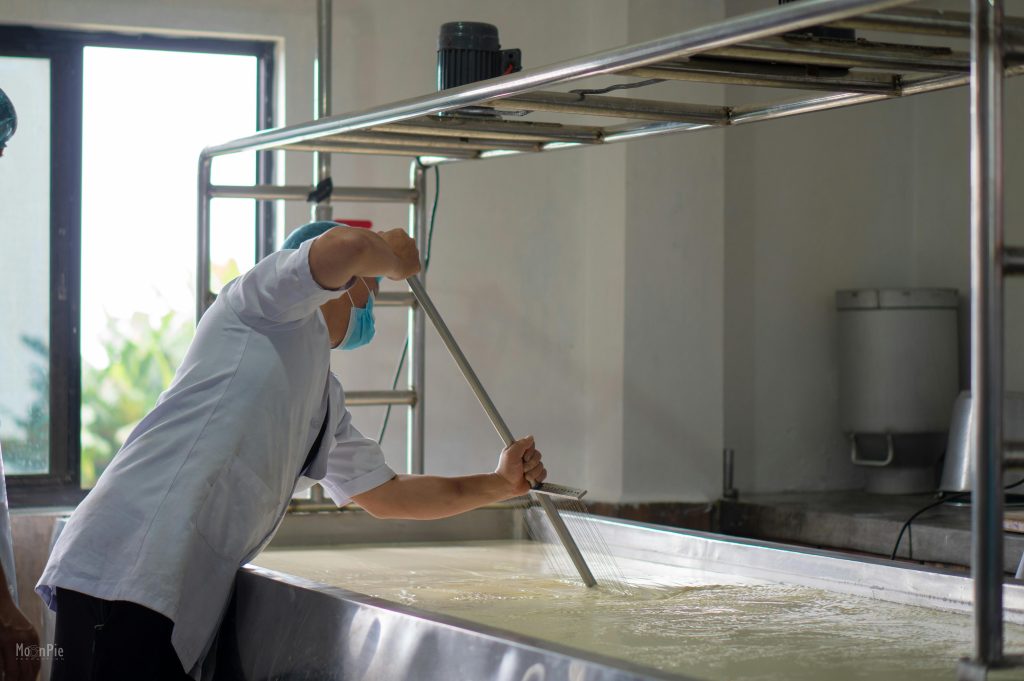Published on 06 May 2024
How circular economical upcycling transforms acidic whey from food industry wastewater into valuable resources.
In a world where sustainability is becoming increasingly imperative, innovative solutions are crucial to tackling environmental challenges. One such solution emerges from the WalNUT’s Hungarian pilot plant, managed by 3R, leading a groundbreaking initiative poised to revolutionize wastewater management and nutrient recovery in the dairy industry.
The plant integrates liquid/solid state fermentation and ABC Animal Bone Char-BioPhosphate adsorption technology to treat acidic whey, a problematic wastewater stream generated by dairy food industries, with a 150 litre WW/batch capacity. Through a meticulously designed process, the plant upcycles acidic whey into a recovered bio-fertilizer and clean water, employing specialized fermentation techniques and bio-carriers, including the use of acidic whey as liquid fermentation medium inoculated by a selected (and agronomically beneficial) microbial strain. The 3R liquid fermentation system eliminates the toxic compounds from the food industrial wastewater, and at the same time it produces high concentration biomass of the agriculturally beneficial microbial strain. The end-product is P/Ca enriched biobased solid organic fertiliser, soil improver and microbial plant biostimulant in economical nutrient density. 3R demonstrates also a new adsorption technique, applying a special and macroporosus adsorbent ABC with specific physical-chemical character that is upcycled from food industrial by-product bone meal. ABC adsorbent is also used for final treatment of the separated liquid effluent from the liquid fermentation process.
The challenges posed by acidic whey are manifold. During certain types of large industrial scale cheese production, approximately 90% of acidic whey is produced, a problematic liquid stream causing serious economical and environment problems for the dairy food industry. Acid whey has a relatively high acidity, biological oxygen demand (BOD) concentration, and chemical oxygen demand (COD) concentration, where the BOD is 175-fold higher than in the typical sewage effluent. The combination of large volumes and high BOD/COD concentrations results in a considerable environmental footprint. The 3R pilot is efficiently addressing these challenges by circular economical upcycling of the problematic acidic whey streams as a nutrient for the fungal microorganism, using unexploited biomass into new products. Combined with ABC Animal Bone Char carrier, a biobased fertiliser with high economic value is produced. ABC Animal Bone Char adsorbent with specific physico-chemical character is also used for final treatment of the separated liquid effluent from the liquid fermentation process as well.

“The 3R fermentation upcycling system transforms the undesirable compounds of the food industrial WW acidic whey stream and reduces serious economical and environment burden of the dairy sector, while creating new products with greater quality and environmental/climate value with second life and new functions” comments Mr. Edward Someus, owner of 3R and environmental engineer. Moreover, the pilot is poised to convert waste and by-products of food industry into safe and lawful biofertilisers, generating high financial and non-financial values, in consistency with the principles of Circular Economy and the European Green Deal.
As soon as this technology will be upscaled at full industrial capacity (TLR9), “this will start a positive market transformation process in the nutrient recovery sector in EU dimension thank to the WALNUT project” remarks Mr. Someus, paving the ground for cost-efficient and profitable wastewater management operations for the different stakeholders while creating the optimal market conditions to sustain market demand in the long term. By creating tangible value for users and stakeholders, the project aims to stimulate sustainable practices in the food industry, driving economic, environmental, and social progress.

Cover image by Nishant Rana on Pexels.
Pilot images provided by 3R.
Share the news:



